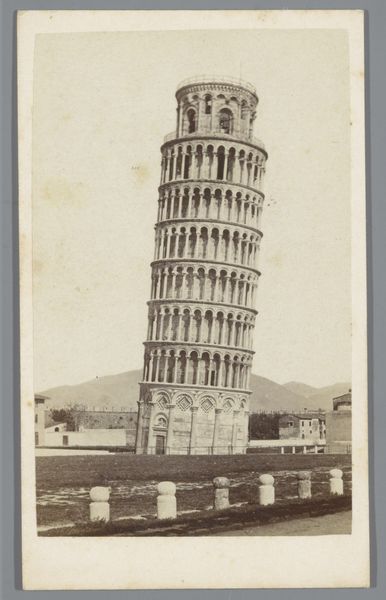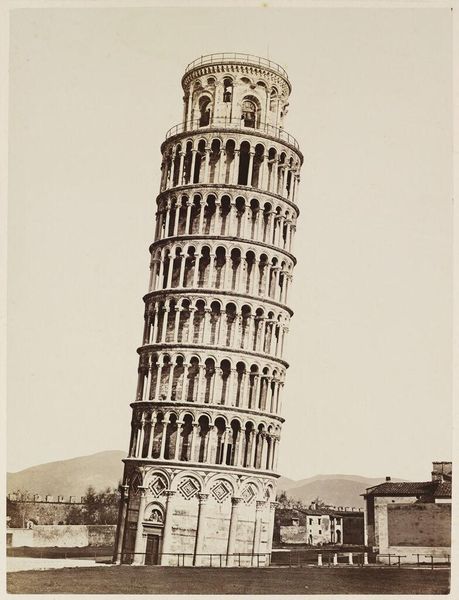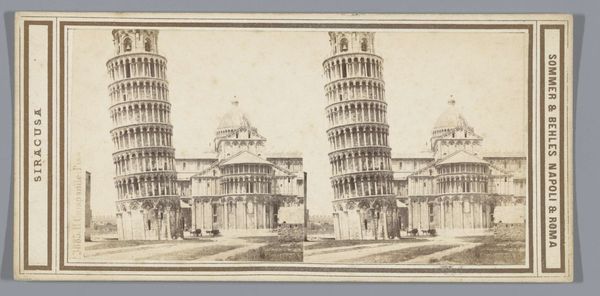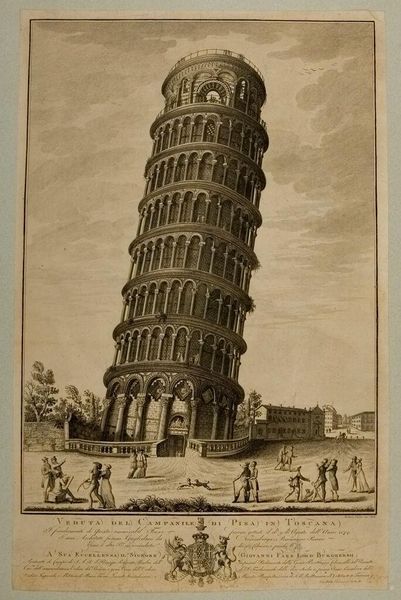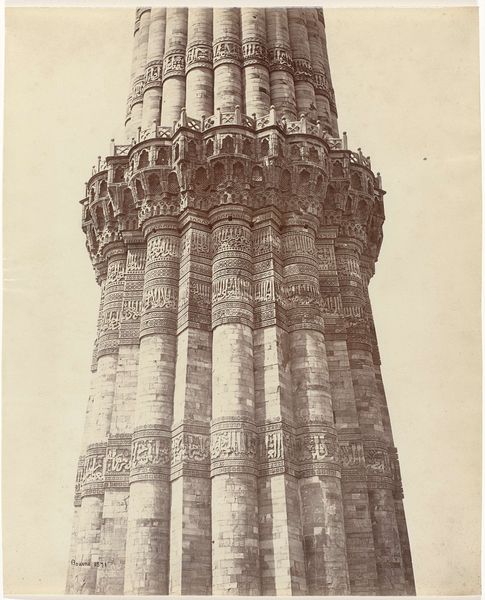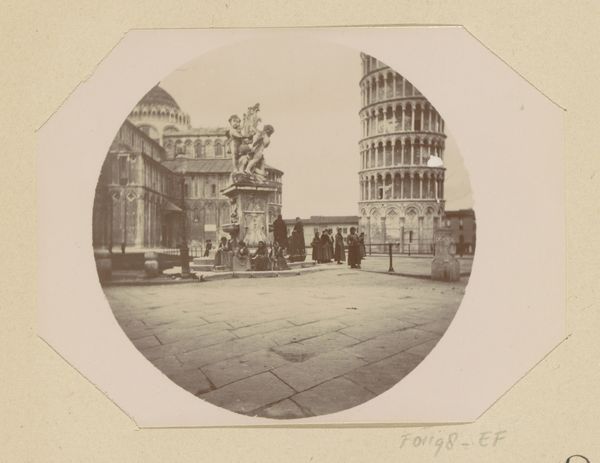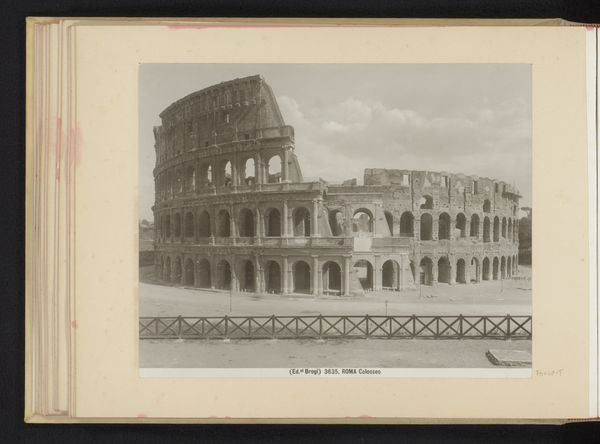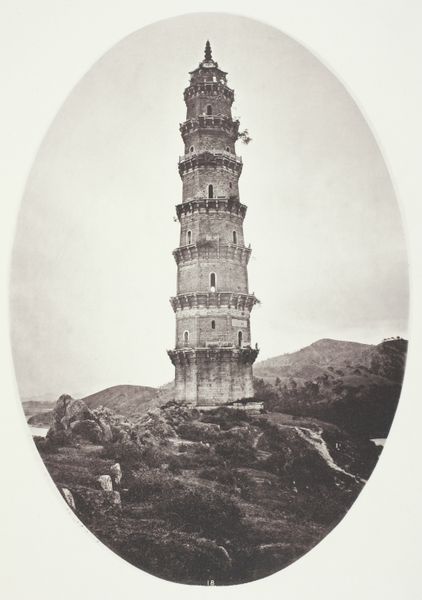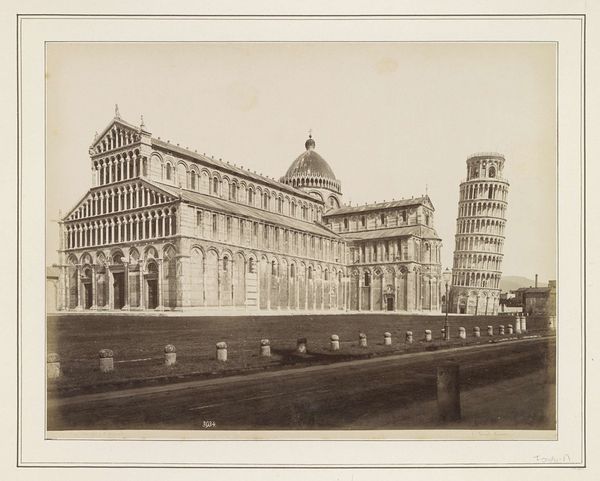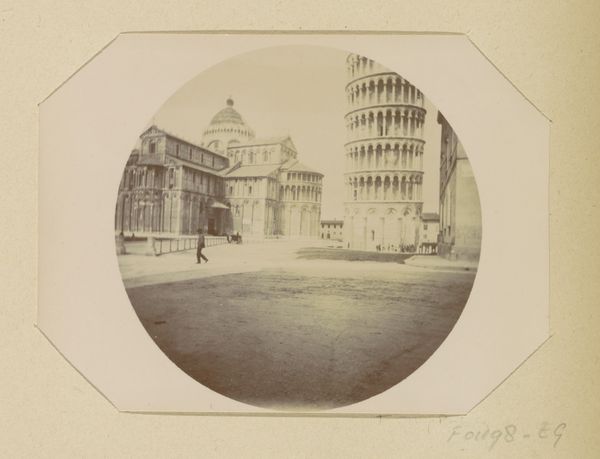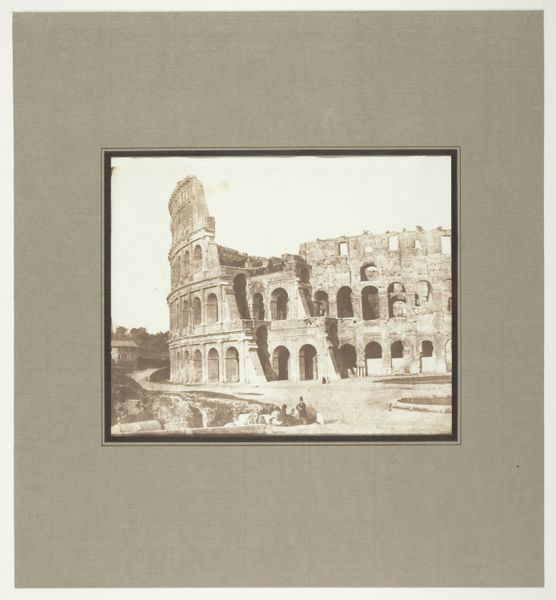
photography, gelatin-silver-print, architecture
#
pictorialism
#
landscape
#
photography
#
romanesque
#
gelatin-silver-print
#
architecture
#
realism
Dimensions: height 252 mm, width 183 mm, height 265 mm, width 188 mm
Copyright: Rijks Museum: Open Domain
Editor: Here we have Giorgio Sommer’s photograph, "Toren van Pisa," taken sometime between 1857 and 1914. It’s a gelatin-silver print depicting the Leaning Tower of Pisa. I'm struck by how…staged it feels, almost like a postcard, despite its age. What can you tell me about this photograph? Curator: What do you mean by "staged?" Considering the time, a perfect capture like this was a technological feat, and perhaps Sommer consciously framed the tower to be a symbol— a monument to architectural imperfection and, I'd argue, the ever-present challenges to patriarchal ideals of strength and permanence. The Tower’s lean becomes a kind of vulnerability, open for the public gaze and judgment. Editor: That's a really interesting interpretation. I hadn’t thought about it that way. It does seem to invite scrutiny, doesn’t it? Curator: Precisely. And we should ask ourselves, whose gaze are we talking about? Consider the era, the burgeoning tourist industry, and the inherent power dynamics involved. Were these early photographs just about documentation, or were they shaping a particular narrative, perhaps one that exoticized and commodified Italy for a Western audience? Think about who has historically had the access and authority to represent whom, and why the Leaning Tower became such a celebrated emblem. Editor: So, you're suggesting that even a seemingly straightforward photograph of a building can be laden with political and social meaning? Curator: Absolutely! Sommer’s photograph isn't merely a neutral depiction; it's participating in a much larger conversation about identity, representation, and power. It prompts us to consider whose stories are being told and whose are being omitted. Editor: That gives me a lot to think about when looking at even seemingly simple artworks. Curator: Exactly! Keep questioning, keep digging, and art becomes a tool for understanding our world and ourselves.
Comments
No comments
Be the first to comment and join the conversation on the ultimate creative platform.
